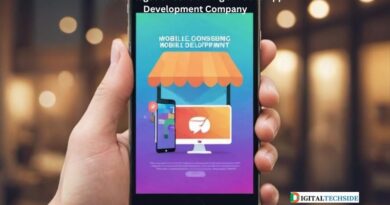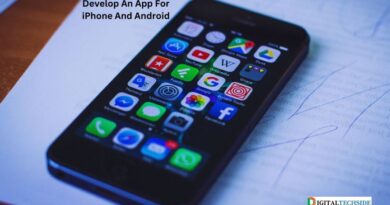Mobile App Development: Enhancing User Engagement
Introduction
With accessibility to convenience, amusement, and information at our fingertips, mobile apps have become an essential part of our everyday lives. User involvement is crucial for success in the fiercely competitive app development industry, though. The methods and approaches that can elevate your mobile application will be discussed in this post. Everything from customization to onboarding will be covered. Encouraging user engagement is the focus of this section on mobile app development.
Mobile App Development: Enhancing User Engagement
Onboarding: The First Impression Matters
The journey of enhancing user engagement begins with a strong onboarding process. This is where users get their first taste of your app. Ensure that the onboarding process is smooth, informative, and user-friendly. Offer a guided tour of the app’s features and let users experience its value from the start.
Personalization: Tailoring the Experience
One size doesn’t fit all, and this is especially true in app development. Personalization is the key to keeping users engaged. To comprehend user preferences and behavior, apply data analytics. Tailor content, recommendations, and user interfaces to individual users, making them feel like the app is designed just for them.
Push Notifications: Timely and Relevant
Push notifications are powerful tools for re-engaging users. However, they can be a double-edged sword. Deliver alerts to users that are appropriate, timely, and helpful. Overuse can lead to users disabling notifications or even uninstalling the app.
Gamification: Fun with a Purpose
Gamification elements, such as badges, rewards, and leaderboards, can add a fun dimension to your app. Users love a sense of achievement, and gamification can keep them engaged. Ensure that these elements align with the app’s core purpose.
Feedback Loops: Listen and Improve
Feedback is invaluable. Establish channels so that people can simply submit feedback. Listen to their suggestions and problems, and be responsive. Users appreciate knowing that their voices are heard and acted upon.
A/B Testing: Data-Driven Decisions
A/B testing involves comparing two versions of a feature to see which performs better. Use this technique to make data-driven decisions about your app’s design, content, and features. This strategy can greatly increase user engagement.
Speed and Performance: The Need for Speed
Users have little patience for slow apps. Optimize your app’s speed and performance to ensure that it runs smoothly on various devices. Slow loading times can be a major turn-off for users.
User-Centric Design: Intuitive and Easy
A user-centric design is essential. Ensure that the app’s interface is intuitive and easy to navigate. Users should be able to achieve their goals within the app with minimal effort.
Social Media Integration: Share the Experience
Leverage the power of social media by allowing users to share their achievements or experiences within the app. This not only enhances user engagement but also acts as free promotion for your app.
In-App Analytics: Measure and Improve
In-app analytics tools provide insights into user behavior. Use these tools to track user engagement metrics. Analyze the data and make informed decisions to enhance the user experience.
Accessibility: Inclusivity Matters
Make your app accessible to everyone, including those with disabilities. Accessibility features not only broaden your user base but also show your commitment to inclusivity.
Security: Trust and Reliability
Users want to feel secure when using your app. Invest in robust security measures to protect user data and ensure the app’s reliability. Trust is essential for user engagement.
Offline Functionality: Continuous Access
Not all users have a constant internet connection. Offer offline functionality where possible to ensure that users can still access and use your app even in offline mode.
Community Building: User Forums and Feedback
Creating a community around your app can foster engagement. Establish user forums or feedback channels where users can connect, share tips, and discuss their experiences.
Regular Updates: Stay Relevant
Update your program frequently to include new features, fixes for bugs, and enhancements. This not only keeps the app fresh but also shows users that you are committed to its ongoing development.
Incentives and Rewards: Loyalty Programs
Implement loyalty programs or incentives to reward long-term users. Recognize and appreciate your users’ loyalty with exclusive benefits.
User Education: Guides and Tutorials
Provide guides and tutorials to help users make the most of your app. Educated users are more likely to engage with your app effectively.
Competitor Analysis: Learn from the Best
Analyze successful competitors to understand their strategies for enhancing user engagement. Identify what works and adapt it to your app.
Load Time Optimization: Quick Start
Optimize the app’s load time. Users appreciate a quick start and smooth transitions between features.
Device Compatibility: Broad Reach
Ensure that your app is compatible with a wide range of devices and screen sizes. This broad reach can attract a larger user base.
User-Centric Content: Value First
Deliver value through user-centric content. Whether it’s information, entertainment, or utility, prioritize the user’s needs.
User Support: Help When Needed
Offer user support through various channels, including chat support, email, or FAQs. Users should have a reliable way to seek help when needed.
Cross-Platform Compatibility: Seamless Experience
Create a seamless experience for users across different platforms, such as iOS and Android. Consistency enhances user engagement.
Data Privacy: Transparency and Control
Be transparent about data usage and privacy policies. Allow users to control their data settings. Data privacy builds trust.
Conclusion
Enhancing user engagement through mobile app development is a challenging yet very rewarding process. You may make an app that not only draws users in but also keeps them interested and devoted by putting these professional tactics into practice and regularly putting user demands and experiences first. Keep in mind that increasing user engagement is a continuous process that calls for modification. If you remain dedicated to providing an amazing user experience along with value, your mobile app development will succeed.
FAQs
Q: How can I improve the onboarding experience for users of my mobile app?
Ans: To enhance your app’s onboarding, focus on making it smooth, informative, and user-friendly. Provide a guided tour of the app’s features and ensure users experience its value from the start.
Q: How can I make the most of push notifications, and what are they?
Ans: Push notifications are messages sent to users’ devices. Use them effectively by sending timely, relevant, and valuable notifications. Avoid overuse to prevent user annoyance.
Q: How can I add gamification to my application?
Ans: Implement gamification by adding elements like badges, rewards, and leaderboards. Ensure these elements align with your app’s core purpose and offer a fun and rewarding experience.
Q: What makes user input valuable, and how can I gather it?
Ans: User feedback is crucial for improvement. Create channels for users to provide feedback easily and be responsive to their
suggestions and problems. Show users that their input is valued and acted upon.
Q: How can I make sure consumers can trust and feel safe using my app?
Ans: Security is essential for user trust. Invest in robust security measures to protect user data and ensure your app’s reliability. This builds trust and enhances user engagement.

As a DIGITALTECHSIDE author, the majority of our articles have been focused on technology, blogging, business, lifestyle, social media, web design and development, e-commerce, money, health, education, entertainment, SEO, travel, and sports.
Contact us at digitaltechside@gmail.com if you have questions of anything.




